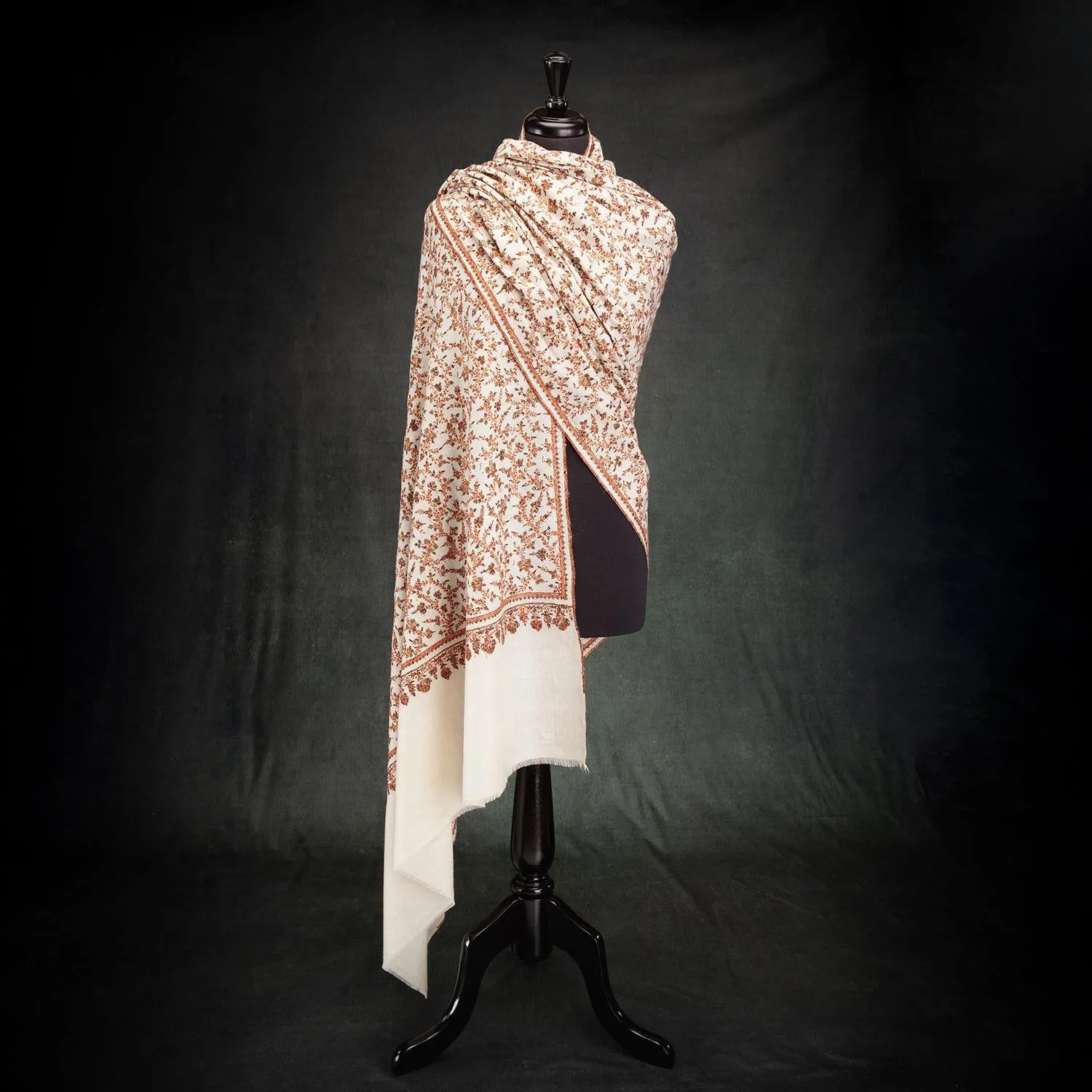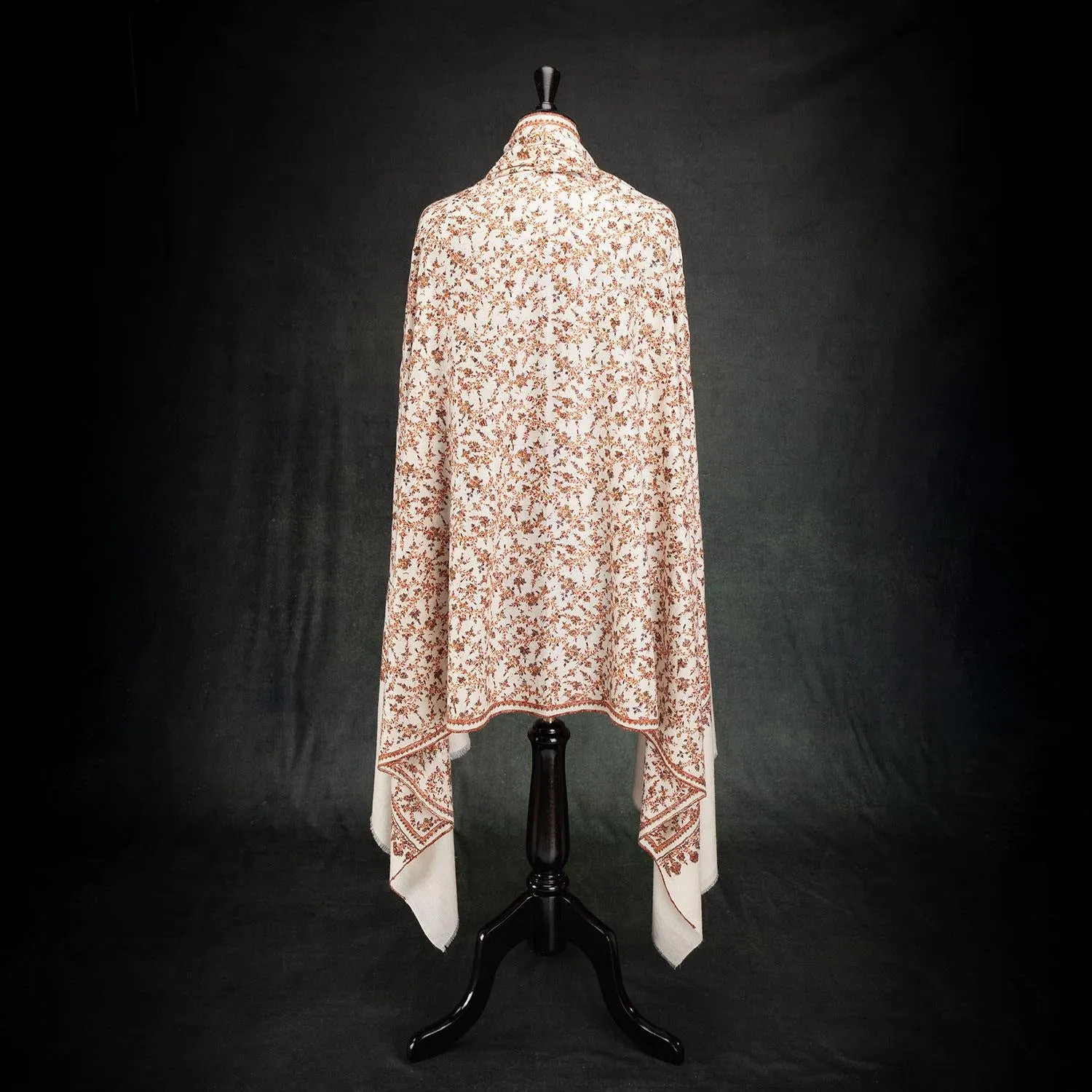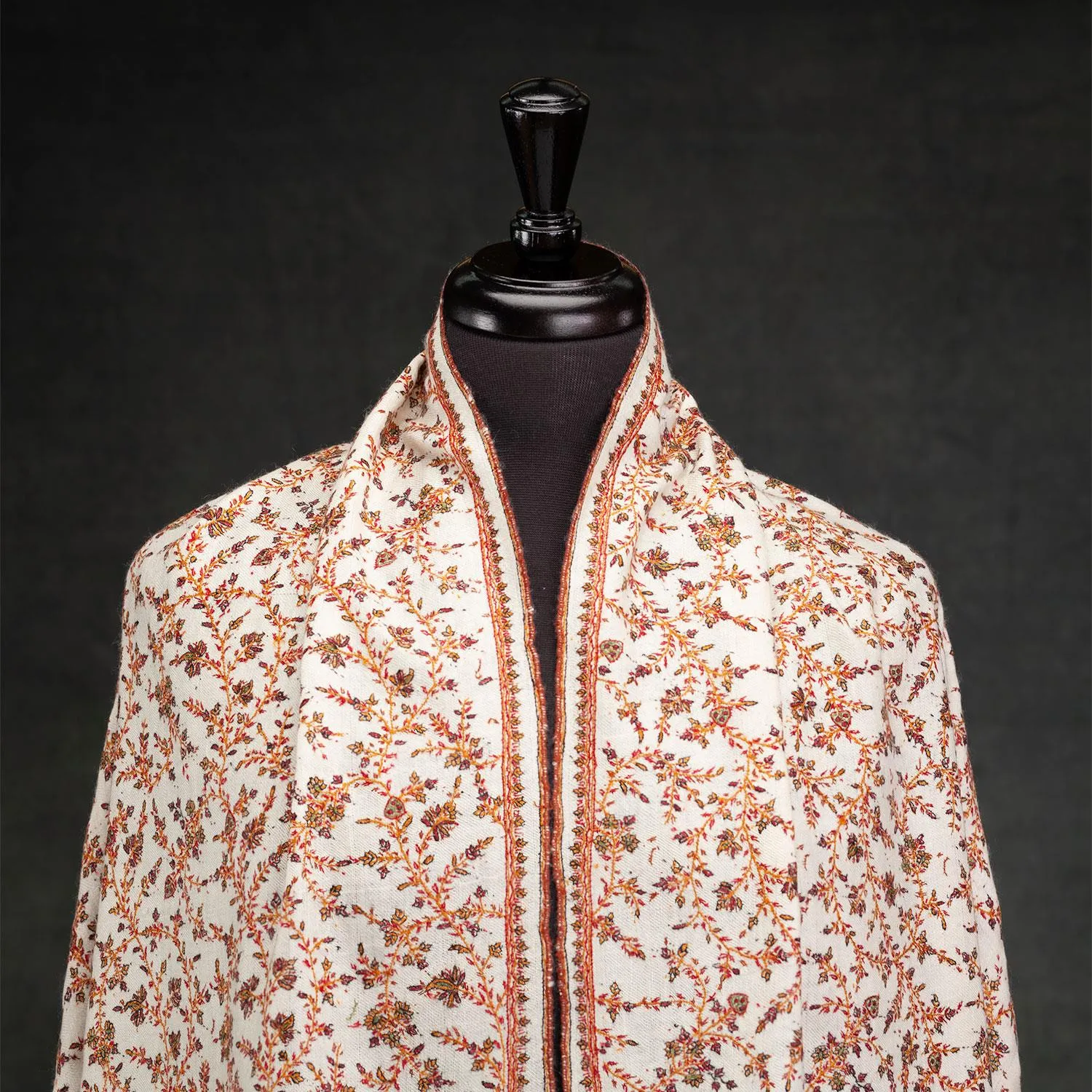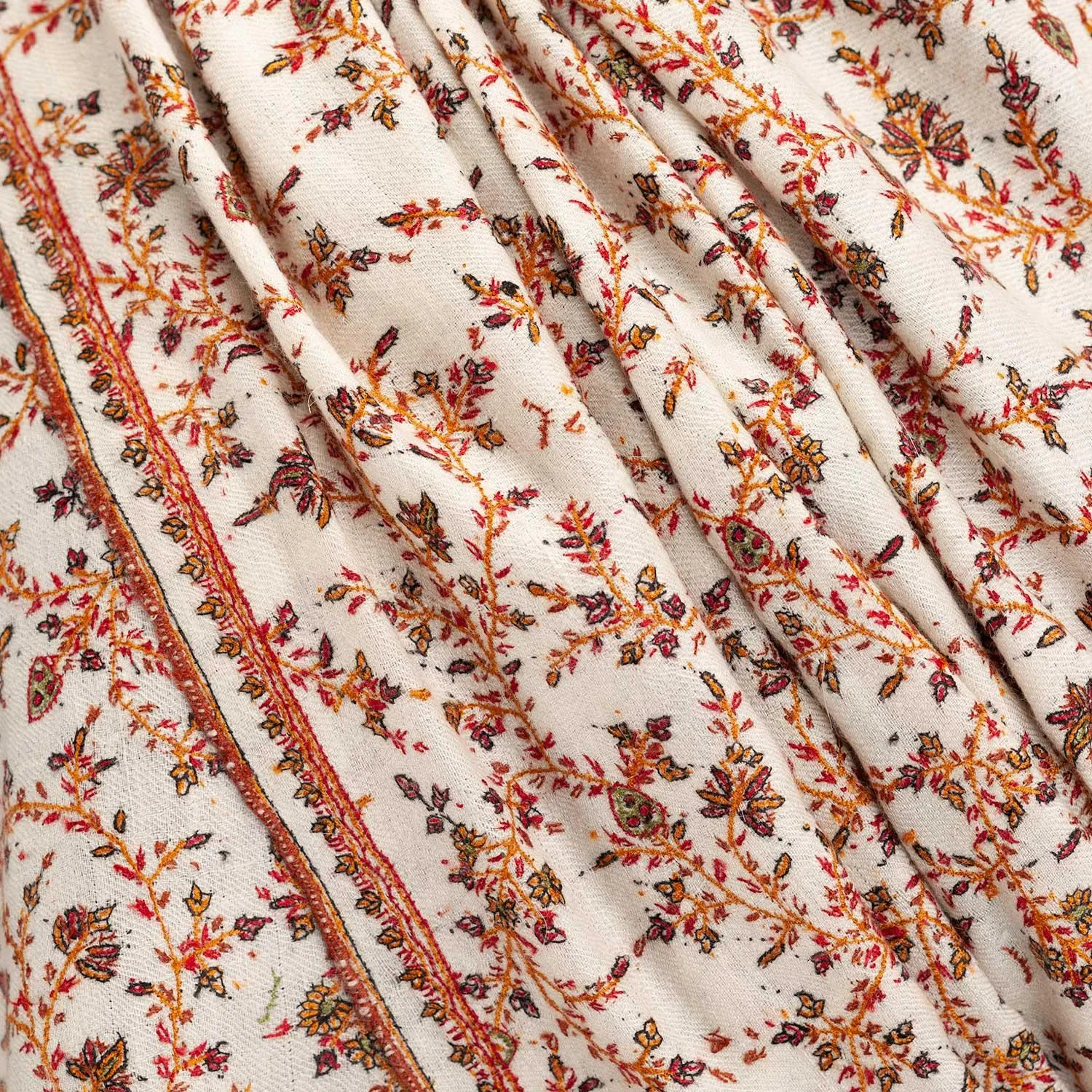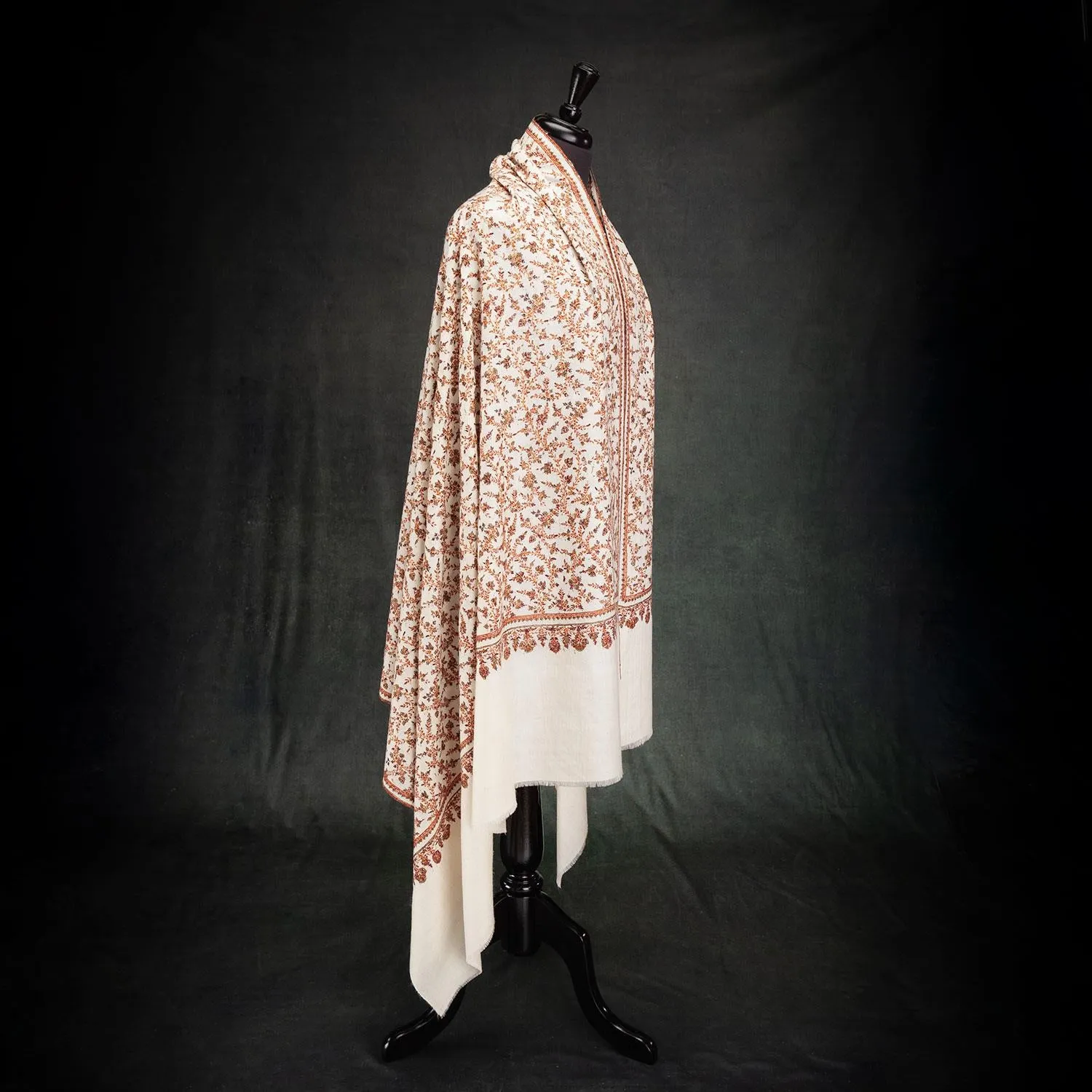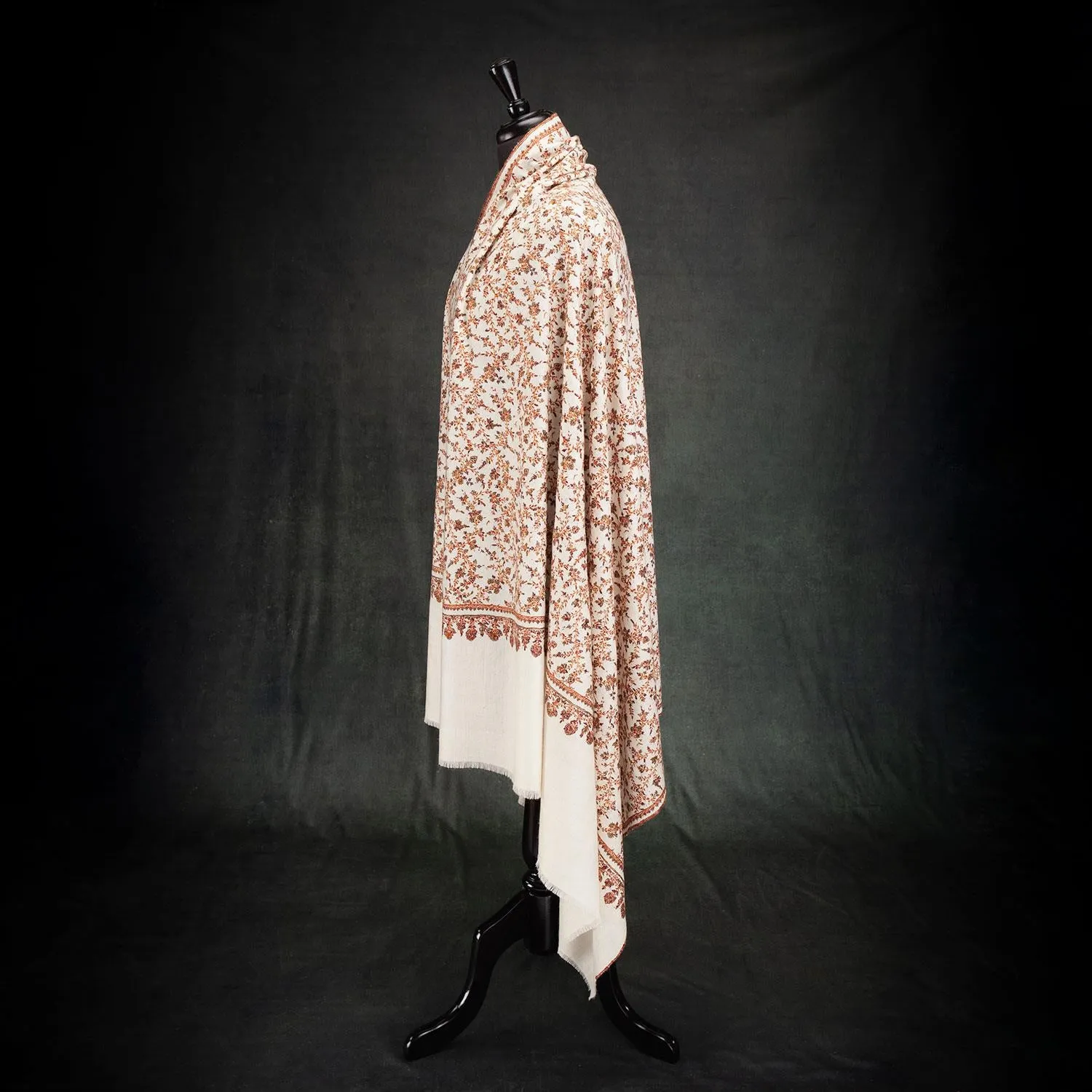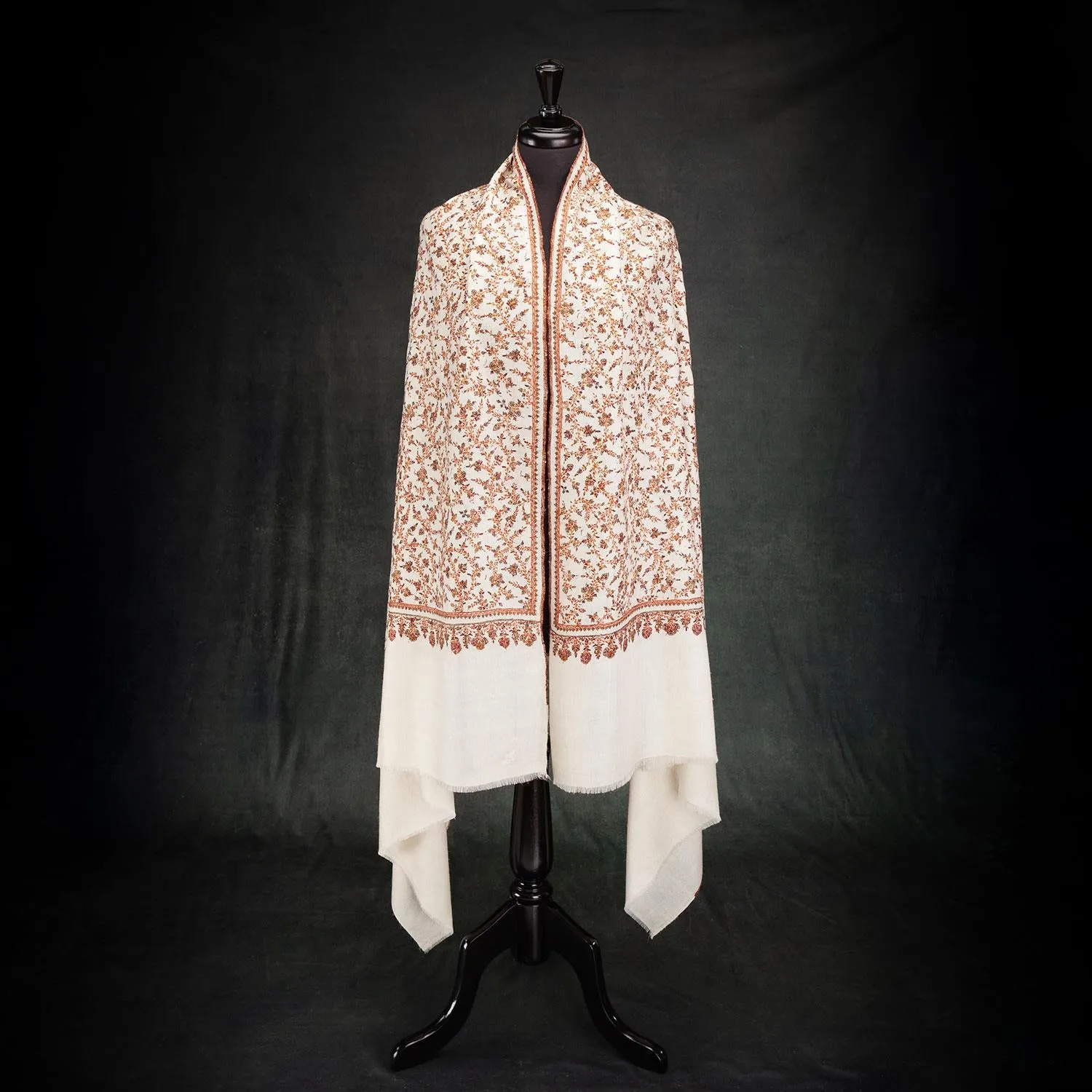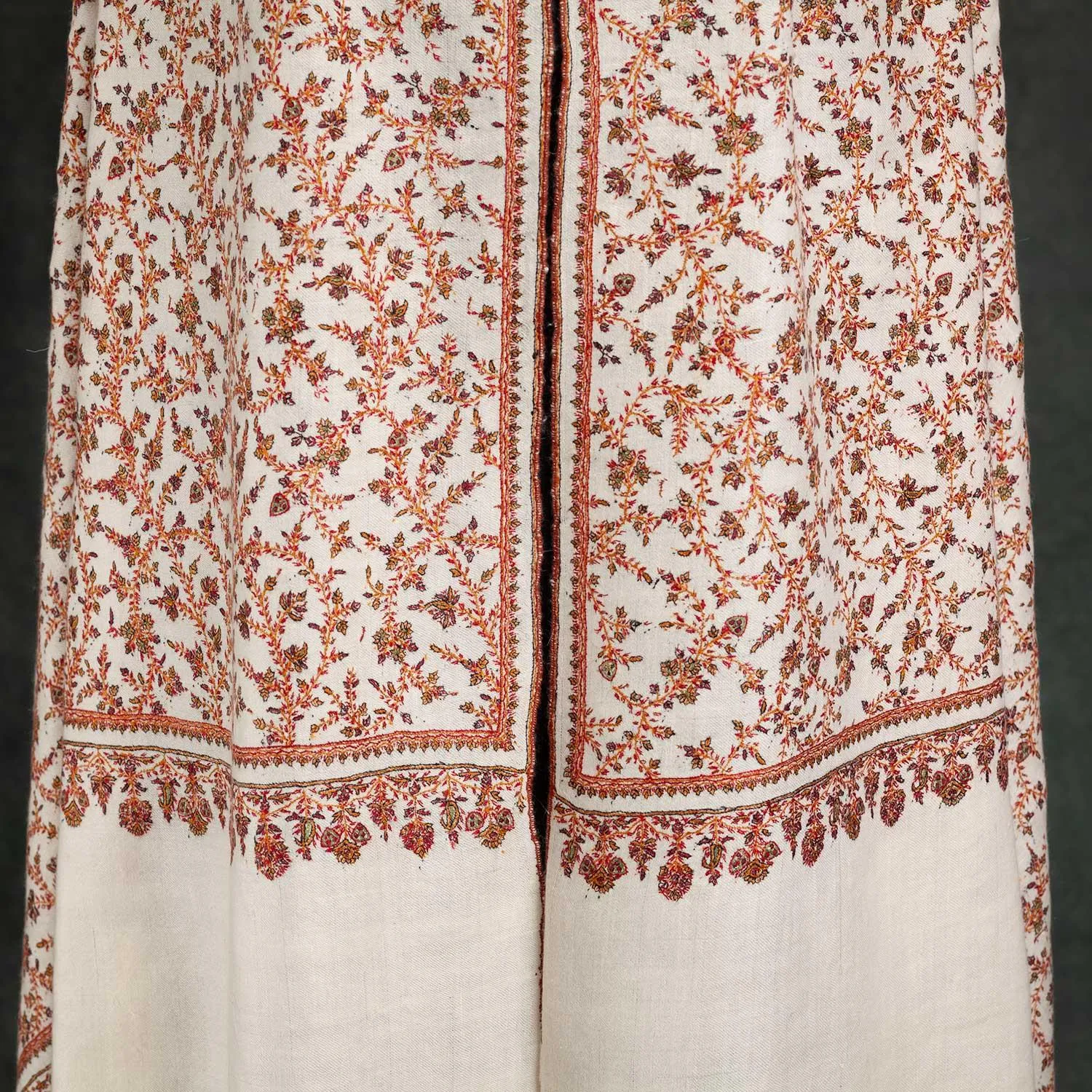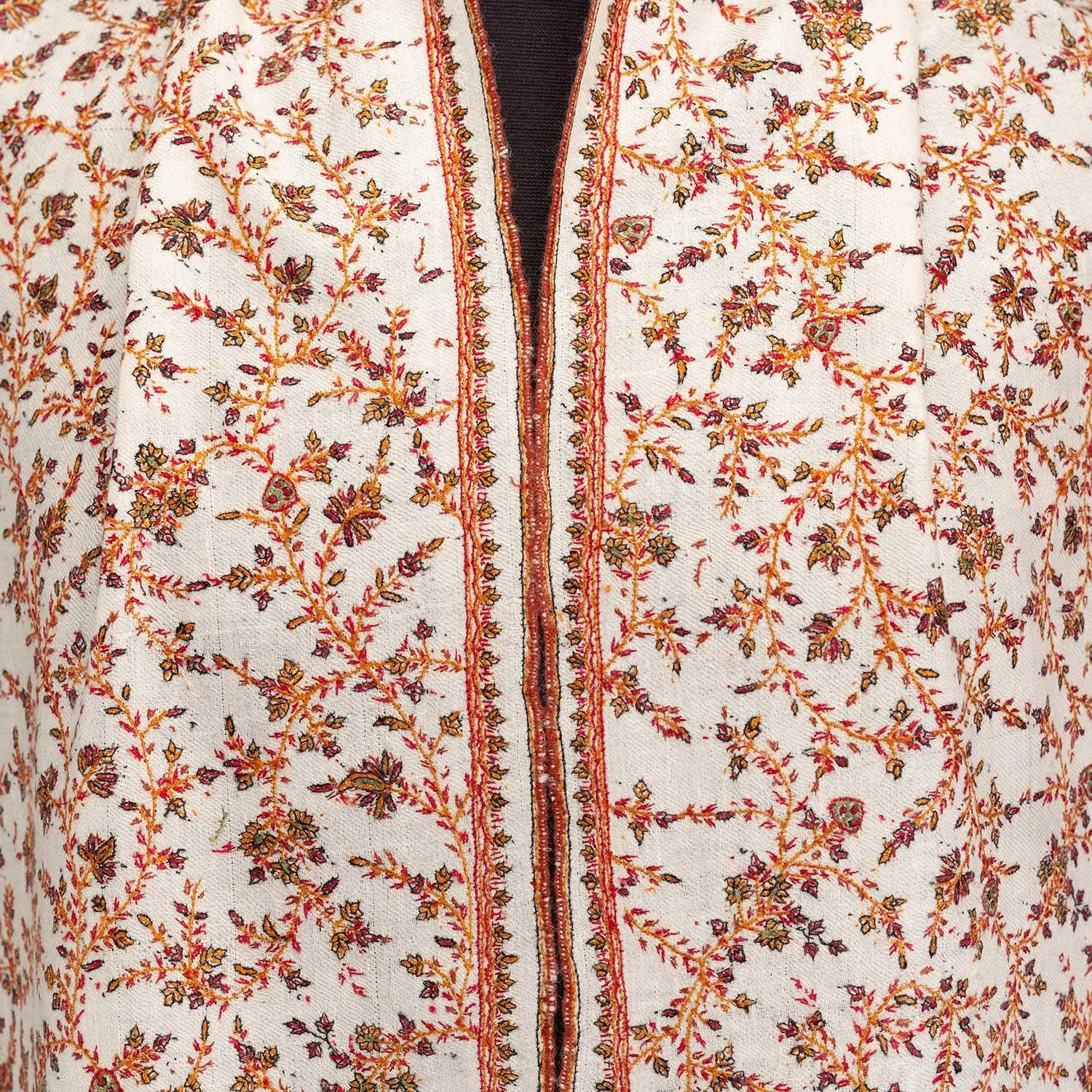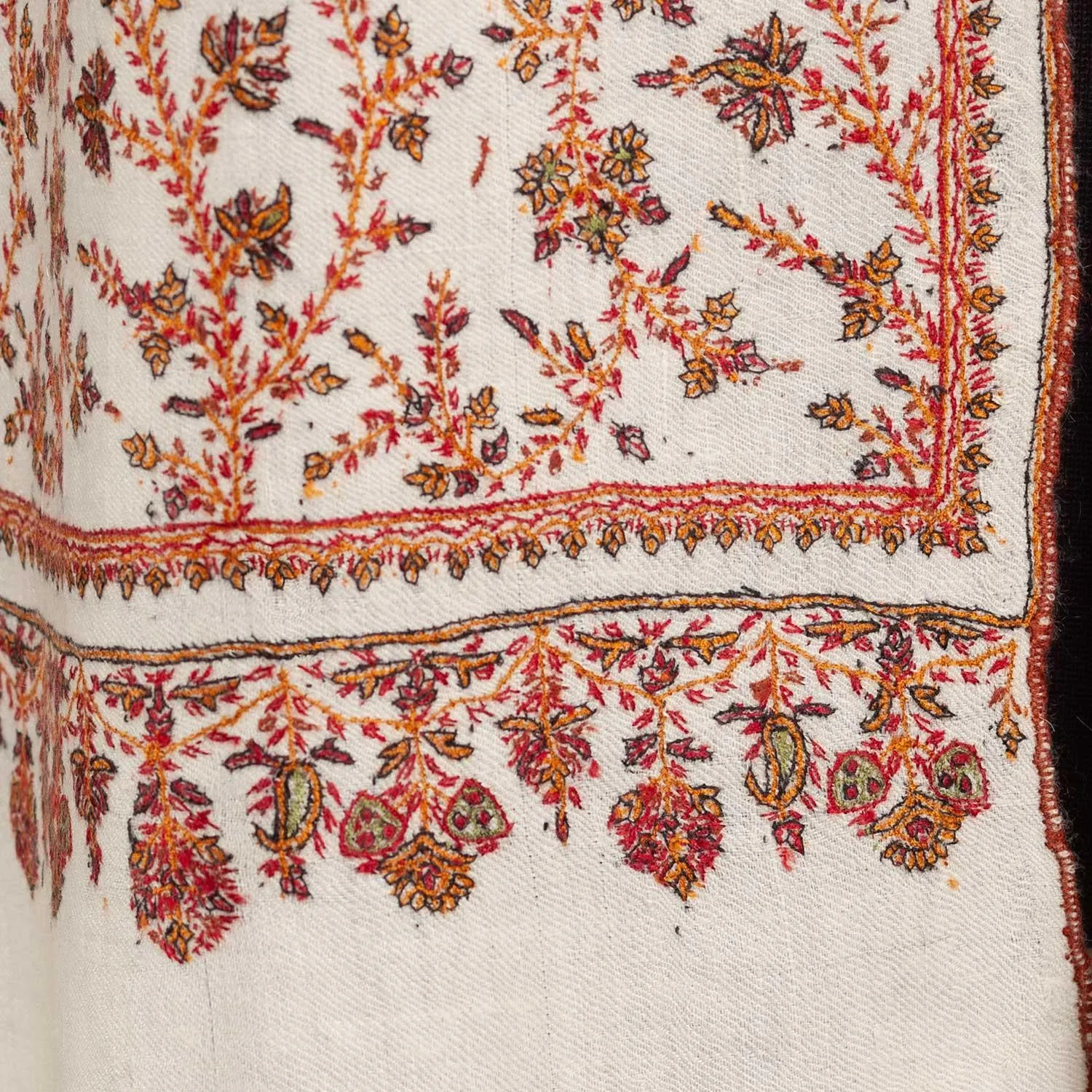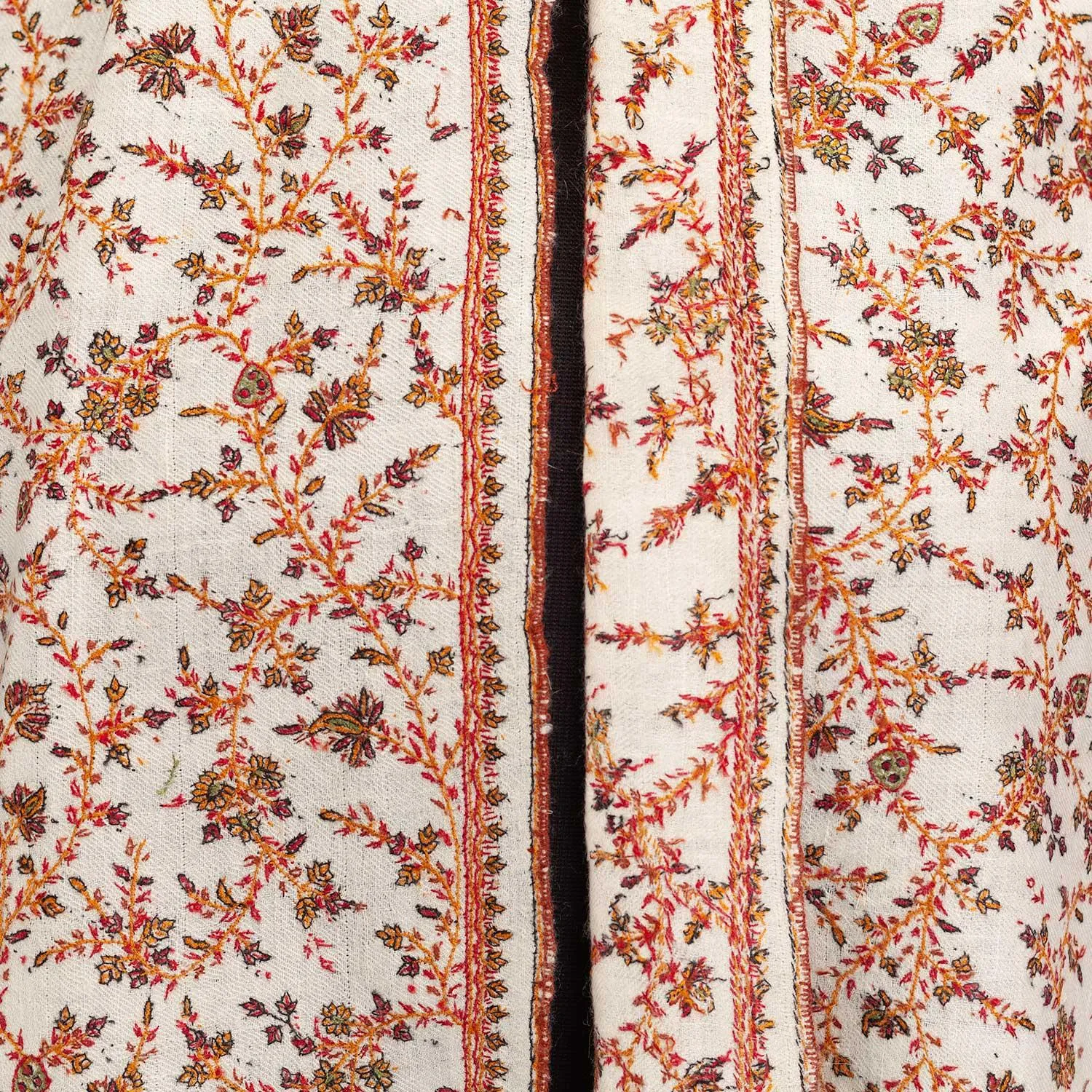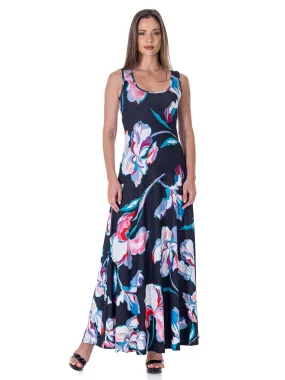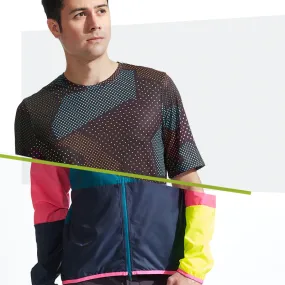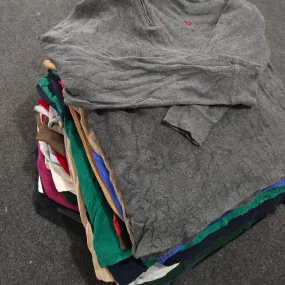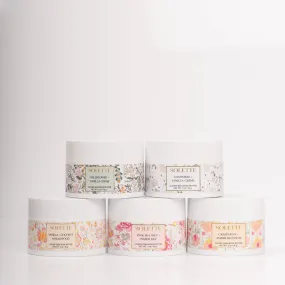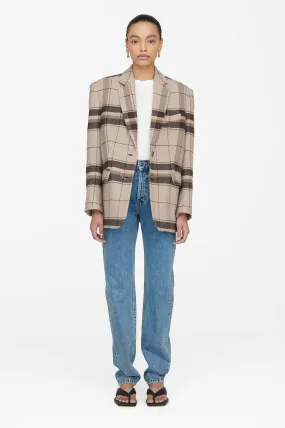Exquisite Sangeen design Sozni hand embroidery on handwoven cashmere to create this incredible shawl. Embroidered vines of Autumn colours in golden brown, red and green on natural pale off-white undyed cashmere.
The word Pashmina comes from the Persian Gulf, it means 'fine wool', the fibres of which come from a particular breed of goat called Chagra which live in the Himalayan mountains of Ladakh.
The fibres used for this unique handwoven and hand-embroidered pashmina are of the finest cashmere, measuring between 12-15 microns in thickness. The fabric has been hand-spun and woven by Mr Mudasir Mir on a handloom in Srinagar, Kashmir, making this cashmere a truly luxurious product. Embroidered in the Sozni style of work by hand, using very fine needlework to create an intricate vine of colours by Abdul Rashid in the village of Budgam. His signature is on the bottom of the shawl in the same cream yarn. It took him over 7 months to create this shawl.
The cashmere for this pashmina is from Changra goats which are not found in Kashmir itself, the wool is carried over the high passes of the Ladakh Plateau in Northern India where the goats live. The goat's coat has a thick underlayer to protect them against the cold environment of the mountains, and a heavier guard outer hair that protects them against the weather. It is the underlayer that is used for pashminas, the shepherds comb the soft fibres out by hand in the Spring.
The Chagra goats only yield approximately 100g of cashmere per goat per year, so this extraordinary fibre is rare and precious.
Once the bundles of cashmere fibres arrive in Kashmir the soft undercoat and coarser outer layer are separated by hand. The carded soft cashmere is then ready for spinning. Only the women of Kashmir do the hand spinning, using traditional skills perfected over the years to spin incredibly fine yarn on a charka wheel. The spun yarn is then wound around another wheel known as a Pritz, turning the wheel as the spun yarn is fed across to give it a slight twist.
The finished hanks of cashmere are then ready to be used for weaving. The fibres used for the 'warp' thread are coated with rice water to give them strength during the weaving process, this is washed out afterwards. The yarn can also be dyed at this stage in copper vats that are heated on open fires. The weaving is traditionally carried out by men. The warp is first placed on the loom and remains static throughout the weaving process. The warp is the long vertical thread that runs the length of the fabric, and the weft is the horizontal thread then passed through going under and over the waft threads.
The patterns for the embroidery are carved on wooden blocks, the pattern is stamped onto the fabric using a paste made from rice water and gum, which is washed out after the shawl is finished. The embroidery is carried out by skilled craftsmen working in Srinagar and the surrounding villages and depending on the intricacy of the pattern and fineness of the stitches can take months to complete. Once the pashmina is complete it is washed in the waters flowing down from the mountains, the natural minerals in the cold water help to enhance the surface of the cashmere. the pashminas' are hung out to dry naturally and then steam pressed in a mechanical roller.
Each pashmina is handled with great care and worked on by skilled individuals using traditional crafts and hand processes.
Accompanying your shawl is 'The Kashmir Shawl', a book that beautifully illustrates the 'landscape and lives' that contribute to the creation of these amazing shawls, enriching your appreciation for this artisanal work.
Composition: Grade 'A' 100% Cashmere, originates from Ladakh.
Size: 110 x 200 cm, Weight: 260 gms
Care: Professional cleaning only.




